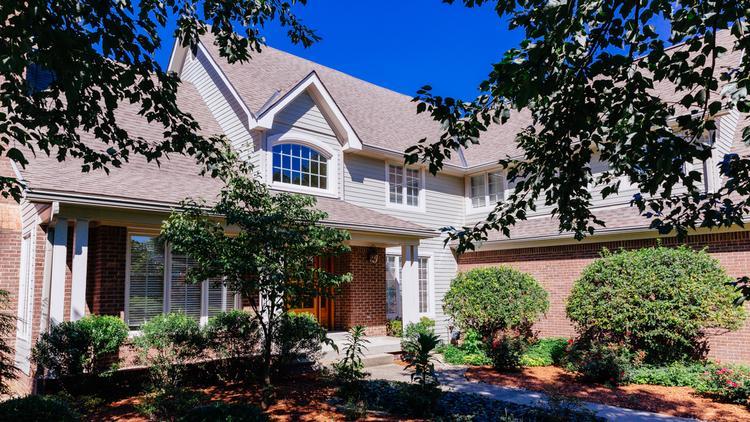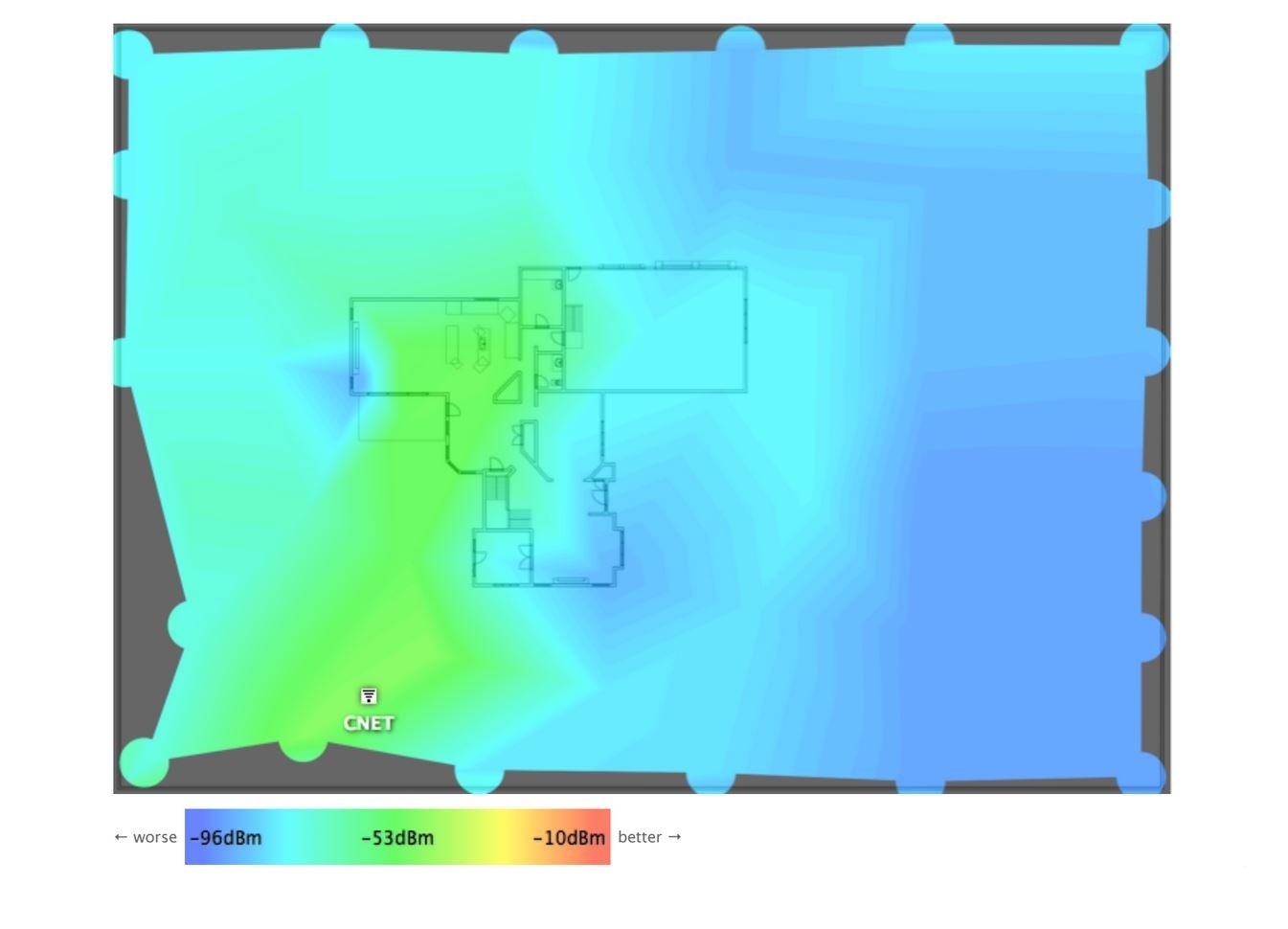CNET Smart Home: Gadget Testing Ground
CNET's computer technology portal, one of the oldest and largest in the segment, bought a house in Louisville, Kentucky, specifically to be able to test smart home devices at www.cnet.com/smart-home .

And before that, CNET tested smart devices - from the moment the corresponding section appeared on the site in 2013 , but did it in its editorial office or at the editors at home. The next few years were spent on finding a budget to implement the idea of a separate house for testing, and several months were spent on finding and acquiring suitable housing.
The size of the house is about 550 sq.m., including an equipped basement. It is located about 30 minutes from Louisville. It has four bedrooms, three and a half bathrooms, a garage for three cars and a swimming pool. The house is surrounded by 4,000 square meters. m. adjacent territory. Since the appearance of this house in the arsenal of CNET surveyors, all tests have been transferred to it: from robotic vacuum cleaners to water heaters, which often can not be avoided in a rural house.
According to the authors of this project, one of the questions that the house should answer is: is it possible to combine curtains on windows, lighting, a coffee machine and music into a single morning ritual that will help wake up? And if so, how much will it cost?
In addition, they are interested in identifying the best method for putting a home online. The house is great for experimenting from scratch, because at the time of acquisition, all that was in the house was a TV, several chairs left over from the previous owner, as well as Time Warner cable television and Internet from a local provider.
The first thing to start with was the launch of the wireless network. This was one of the first reviews of www.cnet.com/news/how-we-boosted-the-wi-fi-in-the-cnet-smart-homeand future smart home. The task consisted of two components. On the one hand, you need Wi-Fi, so that a conditionally unlimited number of devices can be tested in the house without experiencing performance problems. On the other hand, there are many alternative wireless protocols, the most popular of which, as applied to smart devices, are Bluetooth, Zigbee, or Z-Wave, which we wrote about earlier .
The first thing we started with was compiling a heatmap of Wi-Fi accessibility in the house and in the surrounding area, taking measurements every few meters using free software .

With these data in hand, chose two Asus RT-AC87U - one as a router, and the other as a repeater on the other side of the house, then the performance of thermal maps have changed for the better side . However, it should be noted that the problem of coverage throughout the territory has yet to be resolved.
The interesting thing is that in the process of equipping his house, CNET does not resort to the help of integrators and installers, as is customary in organizing expensive luxury housing and industrial solutions. On the contrary, here it is supposed to do everything with your own hands and consistently describe how this happens. Those. in this case, we are talking about the fact that technologies can really go to the masses - this is precisely the trend observed in the market for IoT devices, where many solutions are entirely aimed at low cost and DIY segment. It may well be that the CNET experiment will ultimately prove that such a “game of automation” is complete nonsense, and that a smart home needs the correct architecture of its technological ecosystem, preferably also put into the design of space.
By the way, surveyors have already encountered the first difficulties from this category - they wrote about this in the article “Have we built a smart home from hell?” , Where the author describes a situation in which two different iOS devices could not give the owner complete control at the same time over four WeMo switches. Also, he could not transfer control of the smart lock via iCloud to his colleague, who was driving to the house, so he had to “leave the old way” with an iPhone already connected to the lock and open the door “with his own key”.
The adventures of DIY builders of a smart home are very interesting to follownot only in terms of combining their individual devices into a single network, but also with the goal of increasing the technological literacy of the population. Let's see what happens from this, and be sure to write more about it.


And before that, CNET tested smart devices - from the moment the corresponding section appeared on the site in 2013 , but did it in its editorial office or at the editors at home. The next few years were spent on finding a budget to implement the idea of a separate house for testing, and several months were spent on finding and acquiring suitable housing.
The size of the house is about 550 sq.m., including an equipped basement. It is located about 30 minutes from Louisville. It has four bedrooms, three and a half bathrooms, a garage for three cars and a swimming pool. The house is surrounded by 4,000 square meters. m. adjacent territory. Since the appearance of this house in the arsenal of CNET surveyors, all tests have been transferred to it: from robotic vacuum cleaners to water heaters, which often can not be avoided in a rural house.
According to the authors of this project, one of the questions that the house should answer is: is it possible to combine curtains on windows, lighting, a coffee machine and music into a single morning ritual that will help wake up? And if so, how much will it cost?
In addition, they are interested in identifying the best method for putting a home online. The house is great for experimenting from scratch, because at the time of acquisition, all that was in the house was a TV, several chairs left over from the previous owner, as well as Time Warner cable television and Internet from a local provider.
The first thing to start with was the launch of the wireless network. This was one of the first reviews of www.cnet.com/news/how-we-boosted-the-wi-fi-in-the-cnet-smart-homeand future smart home. The task consisted of two components. On the one hand, you need Wi-Fi, so that a conditionally unlimited number of devices can be tested in the house without experiencing performance problems. On the other hand, there are many alternative wireless protocols, the most popular of which, as applied to smart devices, are Bluetooth, Zigbee, or Z-Wave, which we wrote about earlier .
The first thing we started with was compiling a heatmap of Wi-Fi accessibility in the house and in the surrounding area, taking measurements every few meters using free software .

With these data in hand, chose two Asus RT-AC87U - one as a router, and the other as a repeater on the other side of the house, then the performance of thermal maps have changed for the better side . However, it should be noted that the problem of coverage throughout the territory has yet to be resolved.
The interesting thing is that in the process of equipping his house, CNET does not resort to the help of integrators and installers, as is customary in organizing expensive luxury housing and industrial solutions. On the contrary, here it is supposed to do everything with your own hands and consistently describe how this happens. Those. in this case, we are talking about the fact that technologies can really go to the masses - this is precisely the trend observed in the market for IoT devices, where many solutions are entirely aimed at low cost and DIY segment. It may well be that the CNET experiment will ultimately prove that such a “game of automation” is complete nonsense, and that a smart home needs the correct architecture of its technological ecosystem, preferably also put into the design of space.
By the way, surveyors have already encountered the first difficulties from this category - they wrote about this in the article “Have we built a smart home from hell?” , Where the author describes a situation in which two different iOS devices could not give the owner complete control at the same time over four WeMo switches. Also, he could not transfer control of the smart lock via iCloud to his colleague, who was driving to the house, so he had to “leave the old way” with an iPhone already connected to the lock and open the door “with his own key”.
The adventures of DIY builders of a smart home are very interesting to follownot only in terms of combining their individual devices into a single network, but also with the goal of increasing the technological literacy of the population. Let's see what happens from this, and be sure to write more about it.

